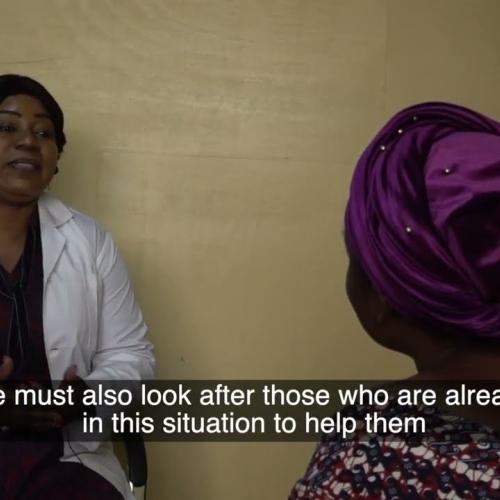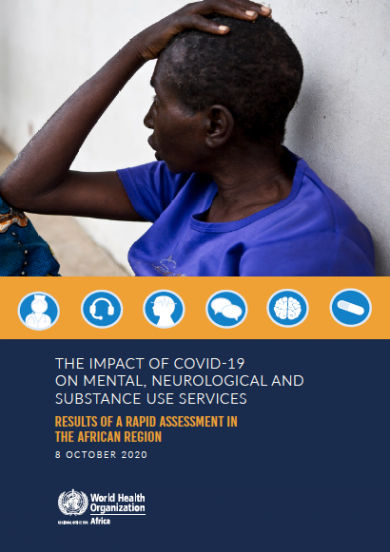Key facts
- Close to 800 000 people die due to suicide every year.
- For every suicide there are many more people who attempt suicide every year. A prior suicide attempt is the single most important risk factor for suicide in the general population.
- Suicide is the second leading cause of death among 15–29-year-olds.
- 78% of global suicides occur in low- and middle-income countries.
- Ingestion of pesticide, hanging and firearms are among the most common methods of suicide globally.
Introduction
Every year close to 800 000 people take their own life and there are many more people who attempt suicide. Every suicide is a tragedy that affects families, communities and entire countries and has long-lasting effects on the people left behind. Suicide occurs throughout the lifespan and was the second leading cause of death among 15–29-year-olds globally in 2015.
Suicide does not just occur in high-income countries, but is a global phenomenon in all regions of the world. In fact, over 78% of global suicides occurred in low- and middle-income countries in 2015.
Suicide is a serious public health problem; however, suicides are preventable with timely, evidence-based and often low-cost interventions. For national responses to be effective, a comprehensive multisectoral suicide prevention strategy is needed.
Who is at risk?
While the link between suicide and mental disorders (in particular, depression and alcohol use disorders) is well established in high-income countries, many suicides happen impulsively in moments of crisis with a breakdown in the ability to deal with life stresses, such as financial problems, relationship break-up or chronic pain and illness.
In addition, experiencing conflict, disaster, violence, abuse, or loss and a sense of isolation are strongly associated with suicidal behaviour. Suicide rates are also high amongst vulnerable groups who experience discrimination, such as refugees and migrants; indigenous peoples; lesbian, gay, bisexual, transgender, intersex (LGBTI) persons; and prisoners. By far the strongest risk factor for suicide is a previous suicide attempt.
Methods of suicide
It is estimated that around 30% of global suicides are due to pesticide self-poisoning, most of which occur in rural agricultural areas in low- and middle-income countries. Other common methods of suicide are hanging and firearms.
Knowledge of the most commonly used suicide methods is important to devise prevention strategies which have shown to be effective, such as restriction of access to means of suicide.
Prevention and control
Suicides are preventable. There are a number of measures that can be taken at population, sub-population and individual levels to prevent suicide and suicide attempts. These include:
- reducing access to the means of suicide (e.g. pesticides, firearms, certain medications);
- reporting by media in a responsible way;
- introducing alcohol policies to reduce the harmful use of alcohol;
- early identification, treatment and care of people with mental and substance use disorders, chronic pain and acute emotional distress;
- training of non-specialized health workers in the assessment and management of suicidal behaviour;
- follow-up care for people who attempted suicide and provision of community support.
Suicide is a complex issue and therefore suicide prevention efforts require coordination and collaboration among multiple sectors of society, including the health sector and other sectors such as education, labour, agriculture, business, justice, law, defense, politics, and the media. These efforts must be comprehensive and integrated as no single approach alone can make an impact on an issue as complex as suicide.
Challenges and obstacles
Stigma and taboo
Stigma, particularly surrounding mental disorders and suicide, means many people thinking of taking their own life or who have attempted suicide are not seeking help and are therefore not getting the help they need. The prevention of suicide has not been adequately addressed due to a lack of awareness of suicide as a major public health problem and the taboo in many societies to openly discuss it. To date, only a few countries have included suicide prevention among their health priorities and only 28 countries report having a national suicide prevention strategy.
Raising community awareness and breaking down the taboo is important for countries to make progress in preventing suicide.
Data quality
Globally, the availability and quality of data on suicide and suicide attempts is poor. Only 60 Member States have good-quality vital registration data that can be used directly to estimate suicide rates. This problem of poor-quality mortality data is not unique to suicide, but given the sensitivity of suicide – and the illegality of suicidal behaviour in some countries – it is likely that under-reporting and misclassification are greater problems for suicide than for most other causes of death.
Improved surveillance and monitoring of suicide and suicide attempts is required for effective suicide prevention strategies. Cross-national differences in the patterns of suicide, and changes in the rates, characteristics and methods of suicide highlight the need for each country to improve the comprehensiveness, quality and timeliness of their suicide-related data. This includes vital registration of suicide, hospital-based registries of suicide attempts and nationally representative surveys collecting information about self-reported suicide attempts.
WHO response
WHO recognizes suicide as a public health priority. The first WHO World Suicide Report “Preventing suicide: a global imperative” published in 2014, aims to increase the awareness of the public health significance of suicide and suicide attempts and to make suicide prevention a high priority on the global public health agenda. It also aims to encourage and support countries to develop or strengthen comprehensive suicide prevention strategies in a multisectoral public health approach.
Suicide is one of the priority conditions in the WHO Mental Health Gap Action Programme (mhGAP) launched in 2008, which provides evidence-based technical guidance to scale up service provision and care in countries for mental, neurological and substance use disorders. In the WHO Mental Health Action Plan 2013-2020, WHO Member States have committed themselves to working towards the global target of reducing the suicide rate in countries by 10% by 2020.








